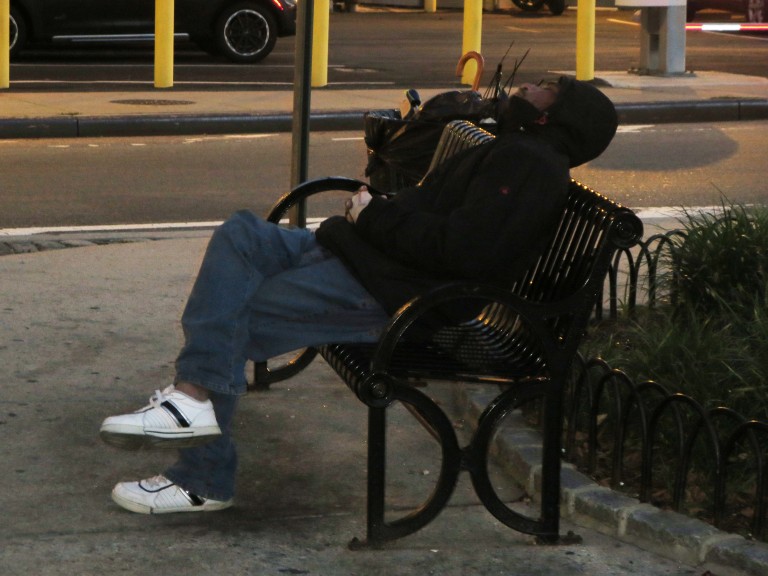PHOTO: The homeless population in Queens, and the city, has increased dramatically in recent years. Forum Photo by Alan Krawitz
With the homeless population continuing to climb in the borough and citywide, the de Blasio administration has enacted a number of initiatives in an attempt to tackle the complex issue.
A centerpiece of the plan is “Opening Doors,” a collaboration with the Catholic Church in which Timothy Cardinal Dolan has pledged to provide up to 150 beds with social services for street homeless individuals by the winter.
The city has also moved to address and clean encampments and other areas where many homeless congregate to provide services and outreach, and help move people to safe locations.
Other efforts include increasing affordable housing and committing more resources to mental health services.
“The de Blasio administration has invested over $84 million over the next four years in street homeless programming to expand outreach workers and clinicians on streets as well as adding beds in shelters for this population,” the mayor’s office has said.
Overall, the city says it has increased the budget for homeless issues to $6 billion, up from the $5 billion that was scheduled over the next four years, including funding for homelessness prevention, getting people off streets to shelter, and helping those in shelters into permanent housing.
According to the Institute for Children, Poverty and Homelessness, in 2014, there were about 1,202 families in Queens who entered city shelters.
Statistics from the Department of Homeless Services reported as recently as September that about 60,000 homeless city adults and children were sleeping in shelters.
ICPH also said that there are many causes of homelessness, including the cost and availability of housing, as well as the lack of both employment and education.
Moreover, a just-released report by city Comptroller Scott Stringer indicated that housing has been vastly overcrowded citywide, and that such conditions could be a determining factor in the number of families and residents who end up homeless and in the shelter system.
The report showed that Queens had about 73,136 overcrowded units as of 2013, compared with just over 64,000 in 2005.
Alexander Blenkinsopp, a Woodhaven resident and member of Community Board 9, lauded de Blasio’s initiatives while also noting that homelessness has become more noticeable to both residents and visitors alike.
Blenkinsopp related a story about friends visiting from London; he said he asked them what about New York surprised them.
“Their response,” Blenkinsopp recalled, “was how dirty the city was, and the number of homeless people they saw.”
He also said that recent statistics seem to confirm what many residents have sensed: that homelessness is a real and growing problem, both in Queens and across the city.
“The mayor is right to want to increase the number of beds for the homeless and the availability of affordable housing…but city initiatives must be pursued carefully and in close coordination with local residents,” Blenkinsopp posited. “The recent controversy over the proposed homeless shelter in Glendale shows what can happen when the city fails to do that.”
Homes for the Homeless, a nonprofit organization that operates the Saratoga Family Inn, a community residential resource center which provides temporary shelter to more than 250 homeless families with children in Springfield Gardens, tries to drive down borough homeless numbers through special programming.
Linda Bazerjian, director of External Affairs for HFH, said the Saratoga runs a program to help residents gain valuable on-the-job experience, as well as workshops on team building, scheduling, communicating in the workplace, and job-seeking tactics.
Asked about the city’s recent efforts to combat homelessness, Bazerjian said she is optimistic.
“We are encouraged by the de Blasio administration’s focus on homeless families and see many efforts at cross-collaboration among city agencies that we had not seen in the past,” she said.
By Alan Krawitz

